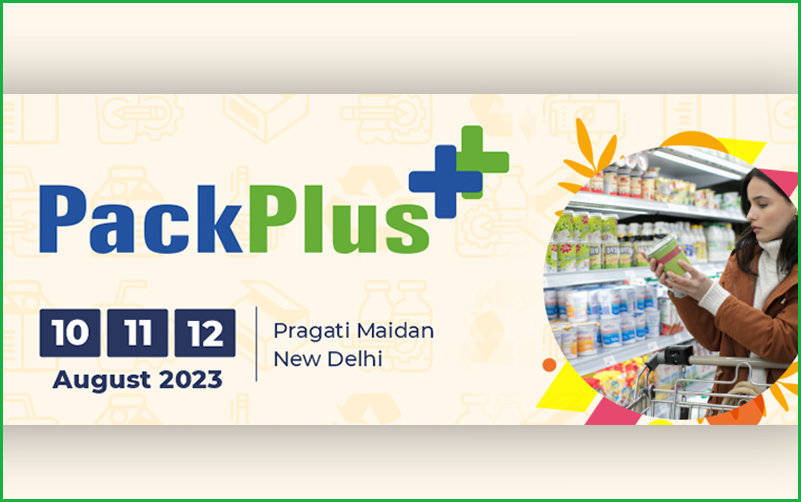
Printmann India Unveils New Auto-Decal Plant
23 December 2021: Kunal Kubba, Director of Delhi-based firm Shares his Experiences with Establishing the New Factory During the Covid-19 Pandemic with an All-Advanced Screen Printing Set-Up in Place
Tell us about your entry into ceramic decal printing ?
I did a degree in ceramic design from Bangalore in 2004. My Father Rajkumar Kubba was a ceramic engineer, but we were unfortunate to not see him in action as he died when I was 11 years of age. Later, as we grew up our mother shared our father’s legacy and how he had earned a name in the market with sheer commitment. As much as he would expect timely payment from clients, in the same letter and spirit he was always committed to paying vendors on time. He was running his business under the name Sanjaya Enterprise. As per our mother’s information, he was an expert in ceramic and glassware decoration. He started with a small plant with manual printing.
Printmann India was started in 2008 with full automation. We have been engaged in producing decals for ceramic and glass, and partly for tiles; about 80% of our business is focused on the supply of decals to crockery units and we also undertake ceramic transfer work for some of the clients. Printmann India is now an ISO 2017 company.
What infrastructure do you have ?
Our Unit 1, which produces ceramic decals, has a Grafica Stop cylinder press with a wicket dryer; two Grafica Camshell with wicket dryer and 2 more Camshell without wicket dryer – all are 30 x 40 inch print area. We have a complete screen making set-up as well as a design studio with 3 graphic designers.
What is the trend in ceramics these days?
The taste for crockery keeps changing. These days we produce decals with 6 to 7 colours with fine printing and often with tone variation. As such there is no fixed trend. To use a quote from the Hindi language that best describes the market, “Jo Dikta hai, wah Bikta hai” meaning whatever looks attractive gets sold. The ultimate goal of the ceramic decal is to make the product attractive. Our experienced design team keeps creating new designs and concepts.
How do you stay updated on market trends ?
I do market research by spending time in online scrawling, social media, visits to exhibitions, malls, shops, etc. Networking also helps a lot. I visited some exhibitions in China, as everybody discovers some new trends in China market. By the way, China is ahead of us in R&D, price factor, quality and designs. But now I want to challenge myself, why can’t we do it in India? A die-hard attitude is needed if we want to achieve such quality.
We have now an experienced team, we have the best infrastructure, we keep creating new ideas. We have our R&D Lab for ceramic decals. I visited Bangladesh where I found that their quality of ceramics is good as they have tied up with Japanese and European companies. I learnt about new ceramic inks and design trends.
What are the challenges in ceramic decals?
Unlike garment decoration, ceramic decoration involves fine design printing; inks and shades (light/ dark) of colours are critical as the crockery after application of decals passes through 700oC heat. So, there comes the variation from what you see on the monitor, to what you print and finally what you get after transferring onto the crockery post burning. So, to get as much as better colour reproduction is a challenge.
One should have a thorough knowledge of ink and related mesh parameters and machine settings. In ceramic decal, mesh plays a crucial role since inks are very thick. So, there is also a need to have a high registration accuracy in printing for which a good screen printing machine is needed which is a widely accepted fact in ceramic decal printing in Delhi NCR and Khurja, the hub of ceramics.
As I said earlier, “Jo dikta hai, wah bikta hai” (whatever looks attractive gets sold). So, ultimately attractive designs on crockery items lure buyers. In order to remain in business in the long run, one should have passion and patience. One needs to keep updating on designs and trends because crockery is a luxury product. As decal producers, we have to understand the “taste” of age group, gender, market region, etc.
Why is a good screen printing machine needed for ceramic decal printing ?
As I said earlier, ceramic decal printing involves the reproduction of fine designs which is not possible without a good quality machine. Because ceramic colours are thick and to get the fine print out of such colours, you need a machine with good squeegee pressure and accurate off contact, registration accuracy, etc.
Why did you dare to venture into the automobile decals business at a time the Covid-19 pandemic was still impacting businesses globally ?
We commissioned our second 3,000 sq. ft. unit for automobile decal production about 6 months ago. We produce designer helmet stickers, decals for 2/4 wheelers and tractors and we supply directly to OEMs. Like our Unit 1, we also have 30 x 40 Camshell, 40 x 60 Camshell, IR/UV and complete Screen making set up. Our new unit is the result of our new thinking.
So diversification into new business was necessary for survival. During the Covid-19 pandemic, how to survive was our main strategy. Being a young generation entrepreneur, instead of thinking negative about becoming Covid-19 positive, my positive thinking was the first step towards survival.
We surveyed and realised that there is good demand for helmets and naturally for helmet decals. So, we made our ink and created some classic designs and experimented and we were successful and our idle time was used for creating new ideas. We pooled our available resources for our new project as the ceramic market was yet to come back.
Initially we incurred losses for 1.5 years, but the fruit of our efforts and new thinking is now paying back as we have successfully commissioned our new automobile decal printing plant. With motivation and positive thinking only we could commission our new unit in 1.5 years during Covid-19.
With your second unit being commissioned, how do you manage both the units single-handedly ?
Managing multiple businesses is both easy and difficult; it all depends on how you allocate your time and balance your routine; of course, the key is to have an experienced and loyal team. And we have separate units for ceramic decals and automobile decals with separate teams and infrastructure, and there is no crossover.
What was your strategy during the pandemic ?
Decorated crockery comes under a luxury lifestyle product category, hence during global lockdowns, the market fell flat. There are always ups and downs in the market but we never experienced total collapse. A crisis like Covid-19 is a new challenge. Well, we took care of our employees and assured them all support and they stood by us. We changed pandemic fear into positivity and thought of developing new business in a short time although it involved big investment.
During pre-pandemic days, we were busy with ceramic decals but during the Covid-19 break, instead of breaking our heads with tension, we spent time on new ideas by analysing our capabilities, capacities and experiences and infrastructure. We shortlisted 1, 2, 3 ideas for new business and automobile decals stood first in the list of ideas.
Today, customers demand price, quality, delivery and prolonged credit; please comment:
In our industry, 60-90 days of credit has become normal. Yes, all have suffered as money got stuck during Covid-19. But the New Normal during Covid-19 is that we have to be selective while offering credit and we do not deal with unreliable clients. Moreover, while as a supplier we can oblige with quality, delivery and competitive price, the client must pay one time and we equally honour our vendors with payment commitment. So, we request our clients to pay on time. And for that matter, we now focus on acquiring quality customers rather than simply running after adding too many customers. If you have too many customers and if you do not get paid on time, it will be risky in future. We do not run after money, we run after quality work so that we get quality clients.
Tells us about materials management:
Design is the heart of crockery products, but to reproduce better quality designs we need to have quality mesh, inks and a good machine with skilled labour. Although we fine-tune our materials requirement, we are open if there is a better option with a cost advantage over the existing materials. We entertain new vendors but we do not buy on face value or sweet talks. We take trials, if proved beneficial then only we shift to a new supplier. We have a multiple vendor strategy for a secure supply of materials. In the case of machinery, we always bought from Reputed Manufacturers.
Share some ‘Wow’ factors in your business:
We got selected by a leading ceramic company among 3 strong shortlisted vendors. During the meeting, the client told us that other vendors are offering quality and good prices. Although our prices were on the higher side, they decided to select us based on our high score on the ‘commitment’ factor which was 200% higher than other vendors. Commitment means, commitment to supply quality decals consistently; delivery commitment and commitment to supply the desired quantity. Let me tell you that I inherited the value of ‘commitment’ from my father.
The second wow factor is that despite the fear of the pandemic, we successfully diversified and established a 3,000 sq. ft. automobile decal plant with new plant and machinery in a short time. And we are on the right track and progressing.
What do you do during your spare time ?
I believe in leading a holistic lifestyle and maintaining an ideal work-life balance. Leading my list of such priorities is spending some quality time with my family members.
www.printmannindia.com






